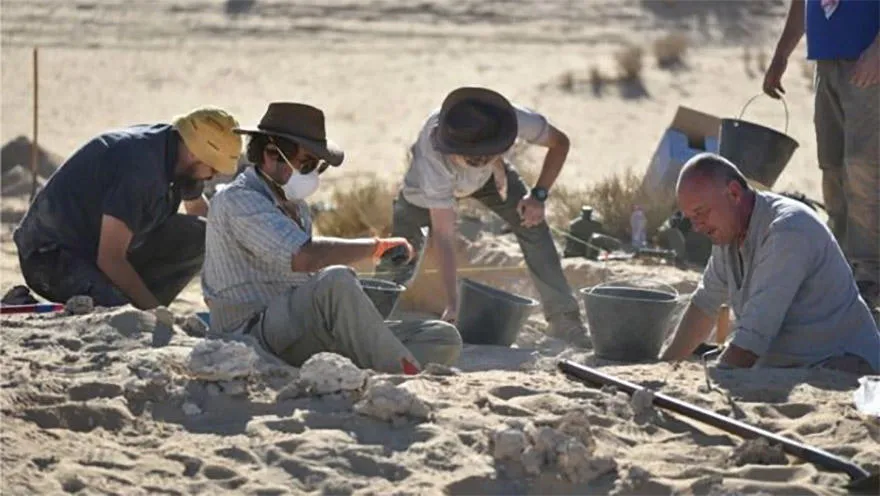‘It just showed how science can work sometimes – you get lucky and stumble across something great.’
Professor Nick Drake
10 April 2018
An 88,000 year old finger bone belonging to an early modern human, has been discovered in Saudi Arabia, placing Homo sapiens in the region nearly 30,000 years earlier than expected.
An 88,000 year old finger bone belonging to an early modern human, has been discovered in Saudi Arabia, placing Homo sapiens in the region nearly 30,000 years earlier than expected.
The bone was found when Professor Nick Drake and Dr Paul Breeze of the Geography Department at King’s College London were part of a small team looking for fossils on dried up lakes in the Al-Nefud desert in Saudi Arabia, which they had mapped using satellite imagery.
Despite the importance of this finding Nick explains that the bone was found somewhat fortuitously:
‘I was part of a small team mapping fossils and after finding only a few fossils on a number of sites, we moved to our final location’.
‘While we stopped for lunch our driver wandered off, returning with an arm full of fossils. We immediately went to look where he had found them and discovered hundreds of fossils lying on the surface. We picked up a few and, very quickly, the person next to me said ‘I think I have found a human finger bone’. We all got very excited at that point!
‘It just showed how science can work sometimes – you get lucky and stumble across something great.’

The team immediately suspected that the finger bone was human and knew it was old as it was found with the remains of a giant cow that has long been extinct.
In order to confirm its age and that it was from a Homo sapiens, it took the team many months of research and testing.
Isotope analysis was needed to confirm how old the bone was and a large amount of data on the dimensions of human finger bones compared to those of other humans, primates and Neanderthals was searched through.
“The more we read, the more convinced we were that the bone was human” says Professor Drake.
It was not until six months later when they carried out a 3D scan of the bone and a comprehensive analysis that compared it to other finger bones that the team were certain.
The team have since returned to the region and haven’t yet found any other human remains but, by looking in locations such as caves, they are confident that there will be more evidence of our ancestors living there much earlier than we thought.
This study is published in Nature Ecology and Evolution.
